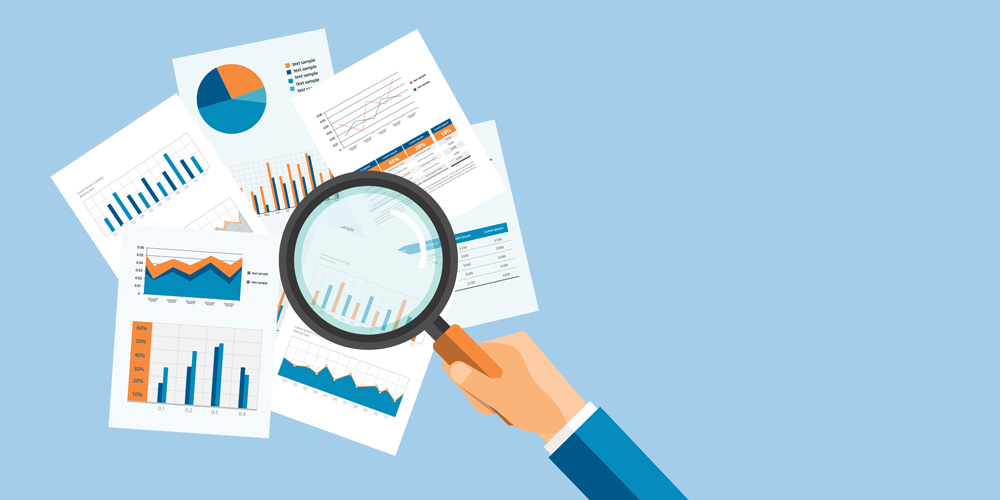In a few words, Web Analytics dissects the online user journey to help marketers make better decisions. By doing so, brands improve their online visibility while acquiring more customers! What are the ins and outs of this practice? Why use it? And what are the basics of an effective strategy? Our article answers all your questions.
Discover here our 3 different content creation strategies!
Summary
- Definition of Web Analytics
- 3 major advantages of Web Analytics
- A good Web Analytics strategy in 3 points
Definition of Web Analytics
In digital marketing, Web Analytics and its metrics optimize the user experience. To do this:
- It detects the good and bad practicesof a website in terms of customer satisfaction and loyalty
- It improves the online awarenessof brands
- And it allows better marketing decisionsto be made thanks to complete and reliable data.
As you will understand, its effectiveness relies on relevant variables and measurement tools. With this, it becomes easier to understand consumer behavior on a website fully.
Fortunately, web analytics platforms abound on the web. This chart from Smart Insights shows it well: they stimulate engagement, conversion, and lead generation.
Finally, this section of digital marketing also improves online performance measurement. It also allows you to visualize the impact of your marketing campaigns better while giving you insight into the practices to adopt for your future initiatives!
3 major advantages of Web Analytics
Now, let’s look at the main benefits of Web Analytics. There are so many of them that it is difficult to choose just a few. However, we propose returning to 3 major positive points of this digital practice. They concern:
- the analysis of content marketing
- the visualizationof your online presence
- and the strength of adaptabilitythat it provides
Its advanced content marketing analysis
Content creation is what IntoTheMinds is all about: we use Web Analytics daily to improve our inbound marketing. Today, these platforms are so comprehensive that they enhance our content marketing analysis. Moreover, these metrics include customer conversion and brand-related metrics (Maintz & Zaumseil, 2019).
Now, marketers can take many actions simultaneously:
- maintain a regular editorial calendar
- go through multiple media to deliver their content
- identify the location of the prospect in the marketing funnel
- etc.
Web analytics sorts out impactful content from ineffective publications.
Web Analytics helps visualize the impact of your marketing campaigns
Next, we also highlight the importance of these metrics for data visualization. Graphs, dashboards, and other correlations are a great help for brands. They allow them to immediately target the source of a problem or the market opportunities to seize.
Web analytics offers many benefits in terms of data visualization:
- better understanding of good and bad digital practices
- faster decision making
- detect emerging online trends
- etc.
It’s the ideal tool to adapt to the evolutions of digital marketing
Finally, analytics does not only grant benefits in the short and medium term. No, better than that: it enriches the knowledge of brands in the long term! For this reason, digital marketing experts have a very strong capacity for adaptability. Thanks to a clearly defined strategic course, companies perfectly monitor their online activity, but that’s not all:
- they appropriate new technologies more easily
- their digital strategies become more effective over time
- and their growth opportunities are increased tenfold.
So, with the game’s rules constantly changing, web analytics quickly adapts to sudden changes. At the same time, brand marketers must ensure they are on top of these developments to maintain strong online awareness. (Saura et al., 2017)
Analytics can help companies measure, adapt and develop their growth strategies.
A good web analytics strategy in 3 points
Finally, we will conclude this guide by mentioning a few must-haves for any Web Analytics strategy. The following sections suggest some unavoidable digital platforms for any Web Analytics specialist. These strategic tips are based on 3 key contributions of web analytics, which are:
- Conversionrate optimization (or CRO)
- The adoption of a tag manager
- And GDPR compliance.
Using the right tools to optimize your conversion rate
First, we introduce the concept of conversion rate optimization here. Web Analytics lends itself perfectly to this game. Indeed, this optimization analyzes the customer experience to convert your prospect base into loyal customers better. To do this, you need to maximize the performance of your website. Indeed, users sow many data during their visits on digital devices.
The goal is clear: develop your website’s traffic while making it more attractive. The following metrics are very useful in achieving this goal:
- SEO : Natural referencing is many sites’ main customer acquisition weapon. This is the case for IntoTheMinds. As a tool, Google Analyticsprovides all the necessary information on traffic, customer conversion, and on the path of your users.
- UX : user experience improves the navigation of visitors on a website. For UX designers, Adobe XD remains a reference in this area. This Creative Cloud platform allows you to create design prototypes for websites, apps, brands, and games.
- SEA : Paid search can boost your online brand awareness by tracking the right conversion metrics. And what other tool than Google Ads to collect all the necessary data? In this case, we highlight the interest of CTR (click-through rate) and CPC (cost per conversion). In this way, you can analyze the attractiveness of your content and even calculate the customer lifetime value.
Implement a tag management policy
Next, you need to set up a tagging plan. But first of all, what is a tag? It is a piece of code inserted in the source code of a web page. Thanks to tags, web analytics tools can measure users’ interactions with the elements of a web page.
Let’s go back to tag management: why do brands need a tagging plan? A tagging plan is the most important tool in a brand’s marketing strategy and includes the priority tags, i.e., the user actions to be followed. Therefore, it is the result of a relevant data collection strategy.
Which tool should I choose for this policy? A good Tag Management System must combine the many Web Analytics available. The ideal solution exists: it is called Google Tag Manager.
The 3 benefits of Google Tag Manager
- It simplifies the trackingof websites. Brands add and manage the tags without touching their site’s code to do this.
- Also, the platform ends the systematic use of web developers. Therefore, tag tracking on Tag Manager is efficient: it saves time and money.
- Finally, for web analytics specialists, the possibilities become almost unlimited. For example, we refer to tracking events (or user actions) and customizable variables.
Web analytics on the go complies with the GDPR
This last tip is about the overall web analytics strategy. In other words, brands must ensure that each tool and platform is GDPR compliant. Indeed, consumers are increasingly protecting the privacy of their data.
The migration from Universal Analytics to Google Analytics 4 (GA4) is a good example of this phenomenon. From now on, the famous web analytics platform made by Google offers the following advances:
- Data protection : GA4 tools guarantee data privacy and hosting in Europe.
- Web and mobile tracking : the new GA4 event system is unified. Therefore, no more need to go through third-party services to track the performance of a mobile-first site!
GDPR-compliant requires a complete review of web analytics solutions, cookies, and tag manager.
Sources
- Kirsh, I. & Joy, M. (2020). Splitting the Web Analytics Atom: From Page Metrics and KPIs to Sub-Page Metrics and KPIs. Proceedings of WIMS 2020, 33–43. https://doi.org/10.1145/3405962.3405984
- Lamberti, F., Paravati, G., Gatteschi, V. & Cannavò, A. (2017). Supporting Web Analytics by Aggregating User Interaction Data From Heterogeneous Devices Using Viewport-DOM-Based Heat Maps. IEEE Transactions on Industrial Informatics, 13(4), 1989-1999. https://doi.org/10.1109/TII.2017.2658663
- Maintz, J. & Zaumseil, F. (2019). Tracking content marketing performance using web analytics: tools, metrics, and data privacy implications. International Journal of Internet Marketing and Advertising, 13(2), 170-182. https://ideas.repec.org/a/ids/ijimad/v13y2019i2p170-182.html
- Palomino, F., Paz, F., Moquillaza, A. (2021). Web Analytics for User Experience: A Systematic Literature Review. Design, User Experience, and Usability: UX Research and Design. HCII 2021, 312-326. https://doi.org/10.1007/978-3-030-78221-4_21
- Saura J.R., Palos-Sánchez, P. & Cerdá Suárez, L.M. (2017). Understanding the Digital Marketing Environment with KPIs and Web Analytics. Future Internet, 9(4),76. https://doi.org/10.3390/fi9040076
Posted in Marketing.






